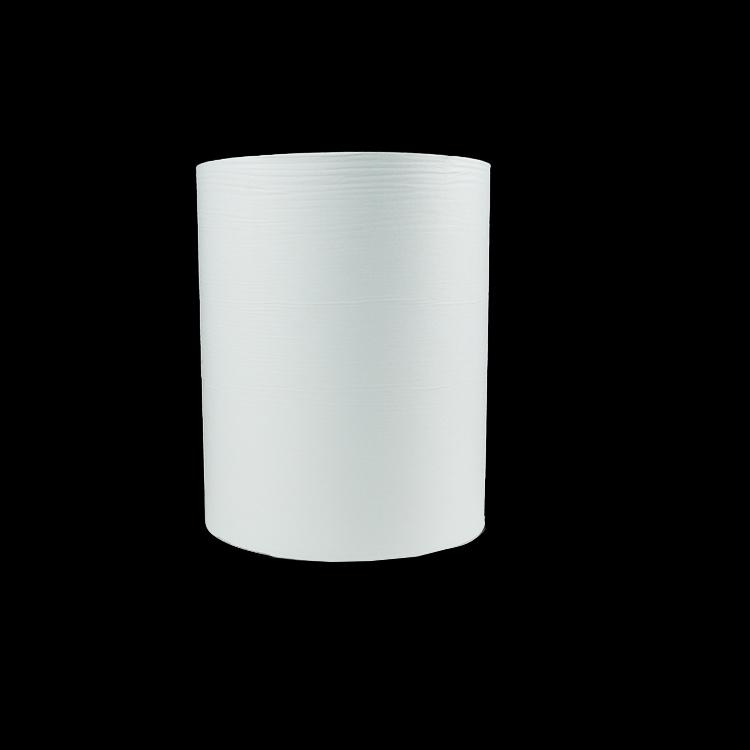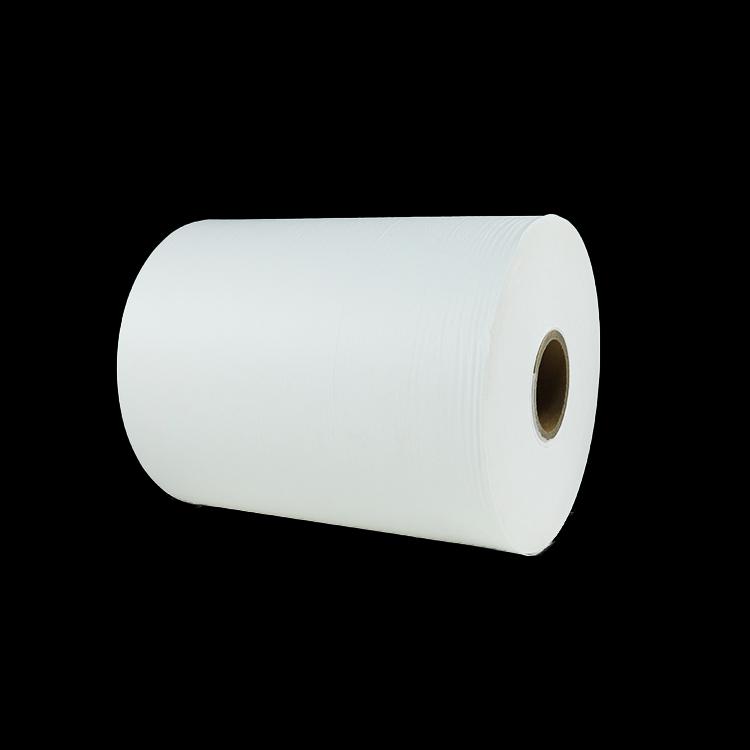Author:Baby & Adult Diaper Materials FROM:Diaper Materials Manufacturer TIME:2023-04-14
With the maturity of the primary processing technology of non-woven fabrics, more and more enterprises are turning their attention to the deep processing of non-woven fabrics, so as to increase the added value of products and the profits of enterprises as much as possible. This article briefly analyzes several main composite technologies of pe non woven fabric used in medical and health industries.
This kind of technology is a method most used by domestic enterprises, and its characteristics are: the process is simple, mature, and the production speed is relatively fast (about 100m/min). Disadvantages: It is not allowed to make products that require ventilation; the hand feels hard and the comfort is poor; the requirements for non-woven fabrics are high. Non-woven fabrics with low grammage (below 18gsm) and low coating weight (below 15gsm) are not ideal for coating, because the unevenness of the surface of the roll makes the coating process prone to leaks.

It is a standard process for manufacturing pe non woven fabric by two-step method. Some domestic enterprises use this process for composite manufacturing of film and cloth. Features: ready-made equipment and technology can be used. Disadvantages: The composition of the film is PE, while the composition of the non-woven fabric is polypropylene. The melting points of the two are different, so that the temperature of the hot roll cannot be taken into account at the same time; the problem of heat capacity of the hot roll makes different production speeds at the same temperature lead to the uniformity of the composite strength of the product. Poor; the processing accuracy of the hot embossed roll is also a factor affecting product quality; the air loss rate of the hot rolling method for the breathable film material is high (between 30-40%); the production speed is slow.
A method of evenly spreading hot melt adhesive powder on non-woven fabrics or films, and then compounding by heat. Features: The heat pressure roller uses elastic roller and smooth roller to cause little damage to the material. Disadvantages: slow production speed and low production efficiency; uniform distribution of hot melt adhesive powder is the key to product quality, but the hygroscopicity of hot melt adhesive powder makes uniform distribution quite difficult, and the amount of distribution is not good Control; the melting temperature of the hot-melt adhesive powder is high, and the melting temperature of the breathable film is low. The hot-melt adhesive powder cannot be completely melted during compounding, resulting in insufficient peel strength and poor surface flatness of the composite film.

Features: Fast production speed, low air loss rate of breathable membrane material (between 20-30%). Disadvantages: large investment in equipment (a set of 1600mm effective width hot melt adhesive ventilating coating composite hot melt adhesive system costs more than 400,000 US dollars); high grammage of glue coating (composite requirements of angle 180, strength 3.0N/inch For example, the amount of glue used is 4gsm or above); the coating head needs to be in contact with the coating material during coating, which requires high stability and flatness of the winding and unwinding equipment; the coating process exerts relatively high tension on the material Large, while non-woven fabrics and films are required to run under a low tension state, otherwise it is easy to cause tensile deformation of the material, and the product will wrinkle after compounding, thereby affecting the quality of the product; the operation adjustment is more complicated: non-woven fabrics and films None of them can withstand high temperatures, and the use temperature of hot melt adhesives is basically 150 degrees Celsius or above. Low-speed operation may easily cause the material to be scalded, causing production to stop and waste to increase.


 Email: info@whldiapernonwoven.com
Email: info@whldiapernonwoven.com
 MP/WhatsApp: +86-13599937366
MP/WhatsApp: +86-13599937366
 Manufacturer Address:Room 1105B, Bld M1, Manhattan, Yulongwan, Shimao, Shuanglong Road, Meiling Street, Jinjiang, Fujian, China
Manufacturer Address:Room 1105B, Bld M1, Manhattan, Yulongwan, Shimao, Shuanglong Road, Meiling Street, Jinjiang, Fujian, China